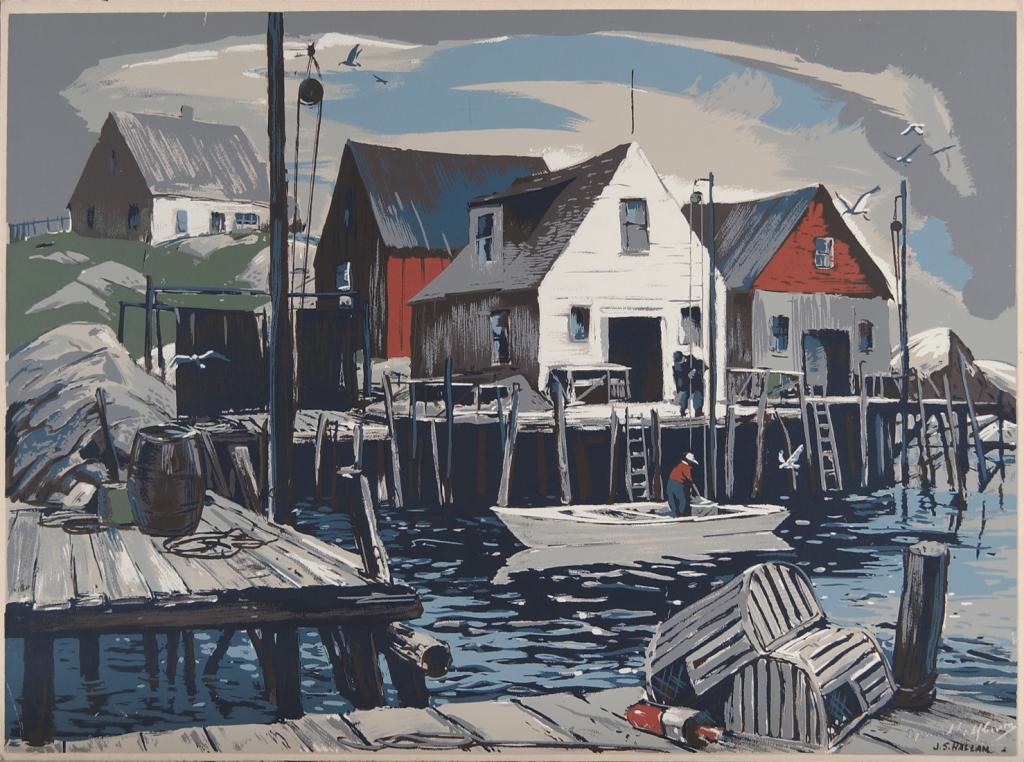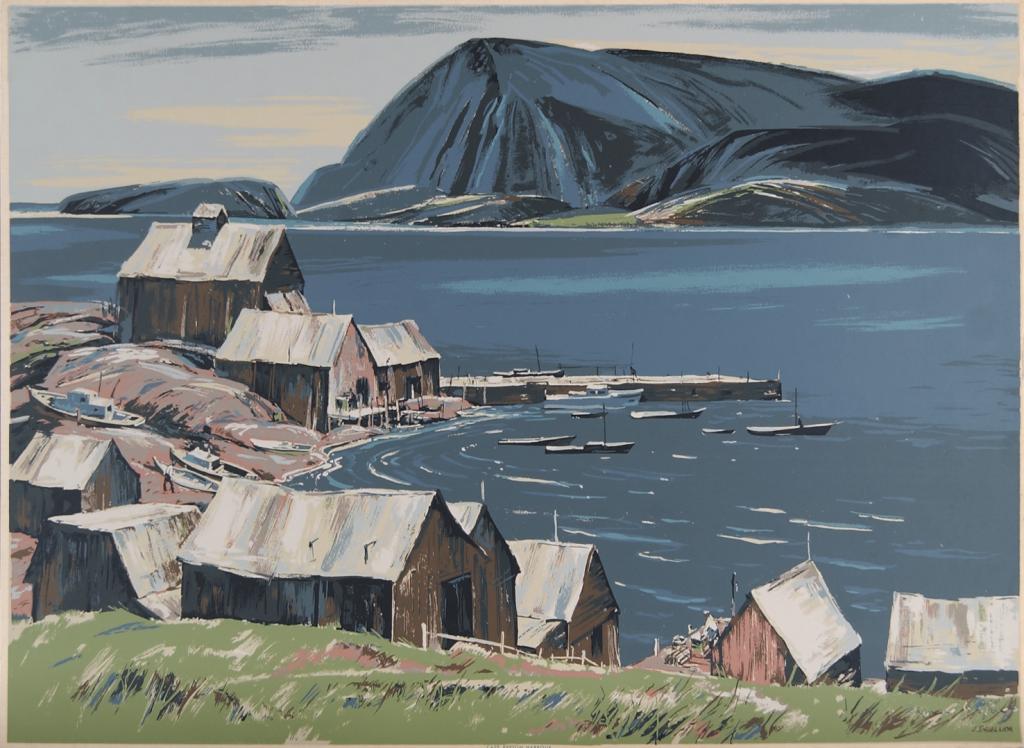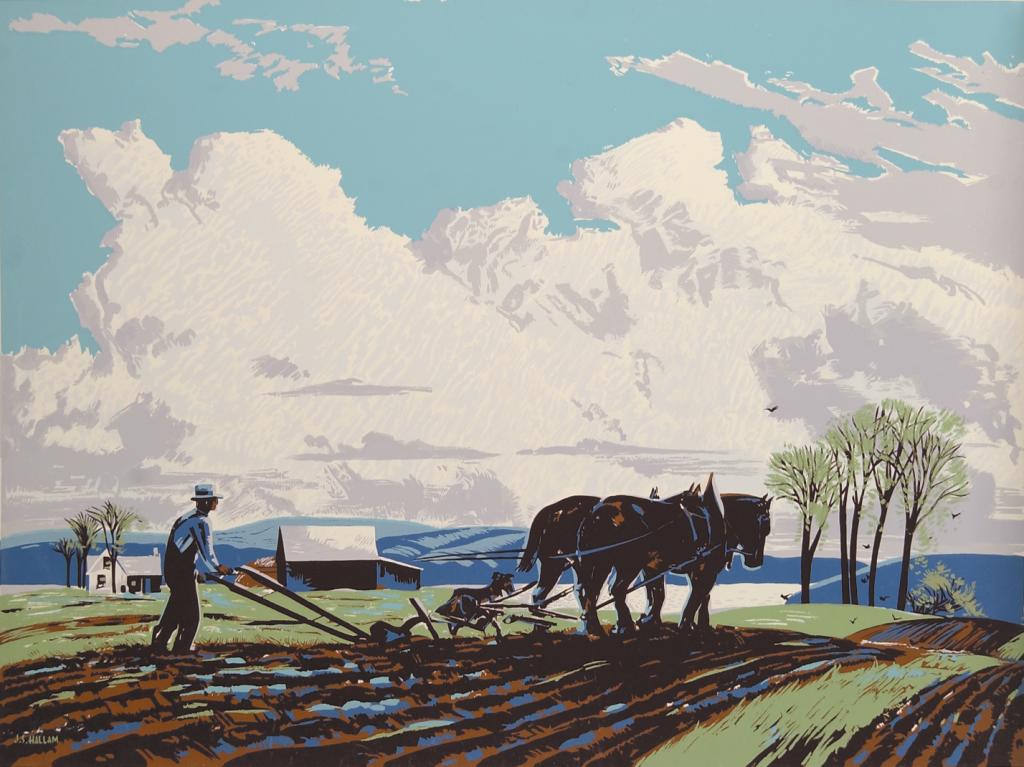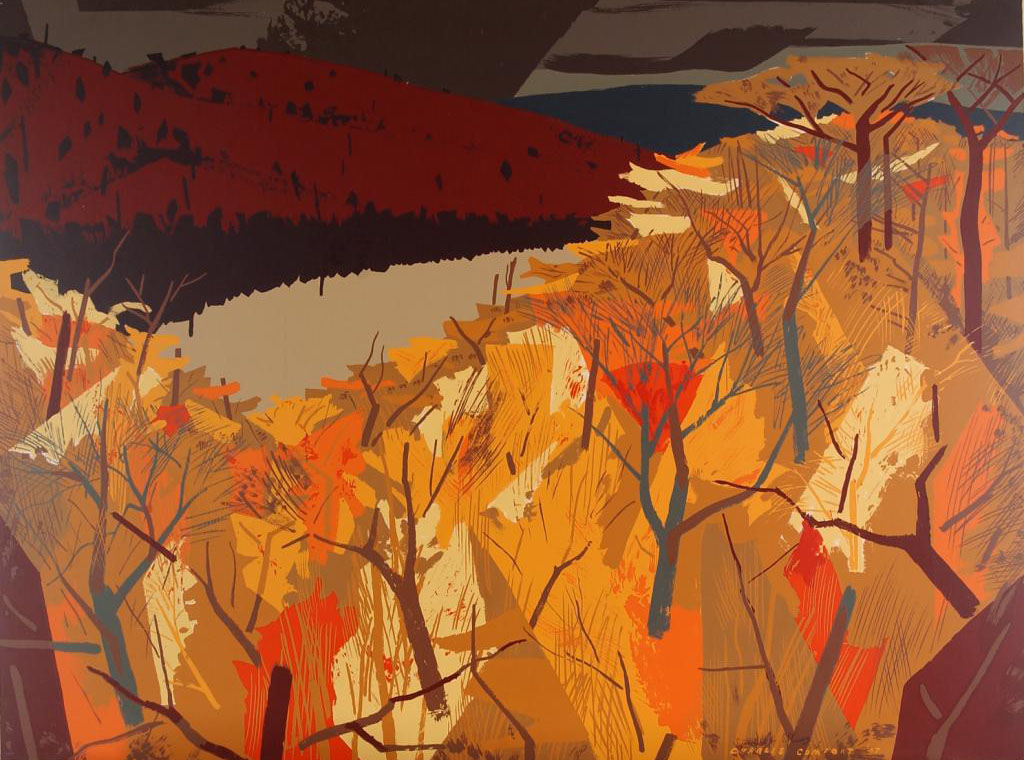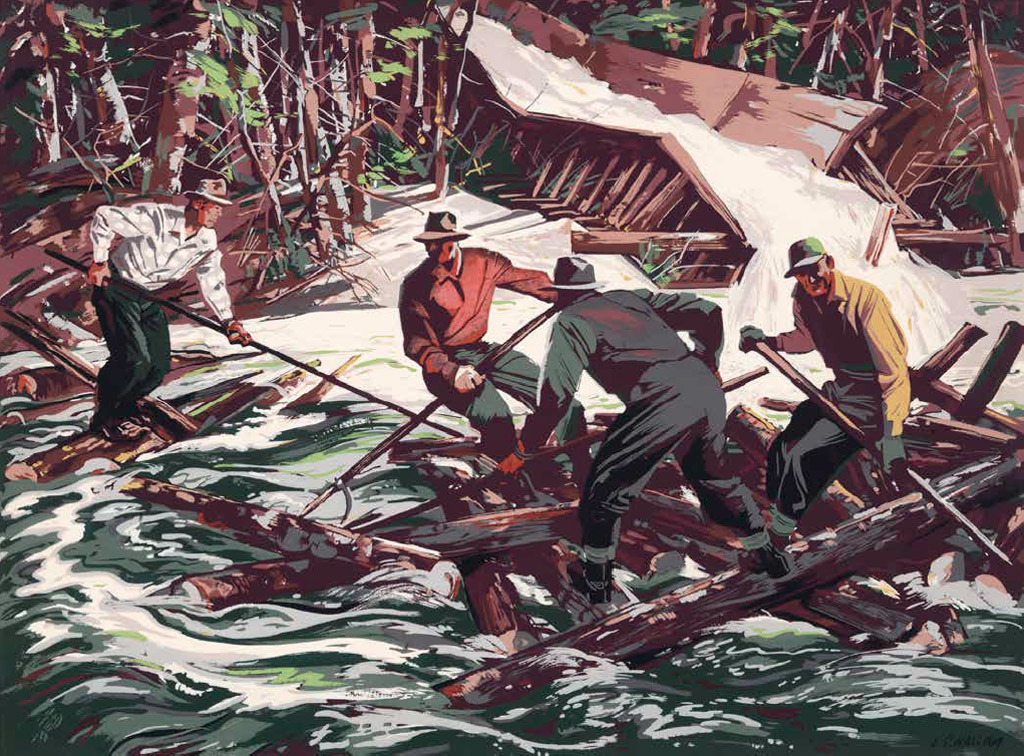Born in England, Canadian artist Joseph Sydney Hallam came to Canada with his family at the age of 12. He studied art at the Hamilton Technical School, the Toronto Central Technical School, and took evening classes in anatomy at the Ontario College of Art under J.W. Beatty and private figure classes under Frederick Varley.
Teaching costume figure drawing in the evenings at the Ontario College of Art from 1940–1945, Hallam considered himself first and foremost an illustrator in advertising and made his mark in this field. He joined Sampson-Matthews in 1921 where he did posters, displays, and illustrations. In 1925 he won first prize in an international non-sectarian church poster competition conducted by the Poster Advertising Association of Chicago.
His poster designs were reproduced on billboards throughout North America. Hallam sketched often with Franklin H. Carmichael, with whom he worked at Sampson-Matthews. His work was reproduced by Sampson-Matthews in 1943 as part of the National Gallery’s plan to furnish scenes of Canada for the Canadian armed forces throughout the world.
In ‘Indian Harbour’, he shows us a quintessential view of our rugged eastern coast, a small fishing village hugging the rocky coastline. Beyond, the cold dark waters harbour small open fishing boats, and in the distance an inky mass of glacier-smoothed rock rises into the grey streaked sky.
In ‘The Ploughman’, Hallam tackles another ubiquitous Canadian subject appropriate to the period of the Victory garden; that of the horse and plough. The team follows the gentle undulation of the land, and the bright green fresh spring growth paints the group of elm trees in the distance while a big dynamic blue sky filled with white clouds holds the promise of seasonal rains, to nourish both the family, and the nation.
In ‘Fish Houses, Indian Harbour’, we see another view of a popular east coast fishing village. Hallam shows a lone fisherman in an open dory, perhaps returning from a morning on the lobster traps, seen piled in the foreground. Gulls fly around looking for scraps, sometimes resting on the tops of the wooden piles supporting the elevated fishing huts jutting out above the water. The whole scene is subdued, not the flurry of activity one expects – perhaps a view into the future of this industry.
Hallam exhibited widely; in the 1930s at the Canadian National Exhibition; with the Canadian Society of Painters in Water Colour from 1930 to 1936; a solo show at the Laing Galleries in Toronto in 1951; at the Roberts Gallery in 1958 and at the Art Gallery of Windsor in 1961. He won the J.W.L. Forster Award in 1947 and the Art Directors Club Medal in 1950.
Hallam was a member of the Royal Canadian Academy; the Ontario Society of Artists and the Arts and Letters Club in Toronto. His work is held in numerous public collections, including The National Gallery of Canada, the collection of Her Majesty Queen Elizabeth II, the collection of the late Pope Pius XII, the Art Gallery of Ontario and the Public Library and Art Museum of London, Ontario.
